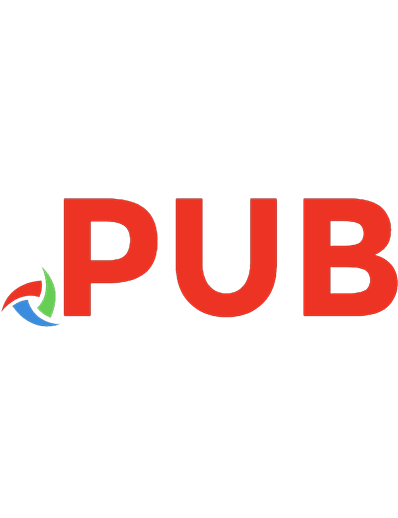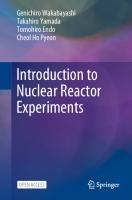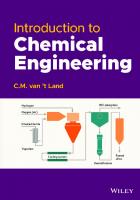Introduction to Nuclear Engineering. A Study Guide 9781032224404, 9781032224411, 9781003272588
206 10 8MB
English Pages 306 Year 2024
Table of contents :
Cover
Half Title
Title Page
Copyright Page
Table of Contents
Preface
Chapter 1 Basic Units and the Atom
Objectives
1.1 Modern Units
1.2 Derived Unit
1.3 SI Prefixes
1.4 Conversion Factors
1.5 Significant Figures
1.6 Four Significant Figures
1.7 Five Significant Figures
1.8 Final Rule of Significant Figures
1.9 Special Nuclear Units
1.10 Atomic Mass Unit
1.11 Physical Constants
1.12 Fun Fact
1.13 The Atom
1.14 Optional on Ordinary Matter
1.15 Atomic and Nuclear Nomenclature
1.16 Here Are the Results
1.17 Definitions
1.18 More Definitions
1.19 Transformation between the Atomic and Macroscopic Worlds
1.20 Mass of an Atom
1.21 Nuclear Dimensions and Approximations
Bibliography
Further Exercises
Chapter 2 Basic Modern Physics
Objectives
2.1 Introduction
2.2 Special Theory of Relativity
2.3 E = mc[sup(2)] and Its Proof
2.4 Relationship between Kinetic Energy and Momentum
2.5 Radiation as Waves and Particles
2.6 Photoelectric Effect
2.7 X-Rays
2.8 Compton Scattering
2.9 Electron Waves ➔ Quantum Theory
2.10 Basic Quantum Theory
2.11 Eight Important Points in Quantum Mechanics
Bibliography
Further Exercises
Chapter 3 Atomic and Nuclear Models Including Chart of Nuclides
Objectives
3.1 Basic History
3.2 Discovery of Radioactivity
3.3 Thomson’s Atomic Model: The Plum Pudding Model
3.4 The Rutherford Atomic Model
3.5 The Bohr Atomic Model
3.6 Mathematical Derivation of the Bohr Atomic Model and Bohr’s Third Postulate
3.7 First-Generation Model of Nucleus
3.8 Proton–Electron Model
3.9 Proton–Neutron Model
3.10 Nuclear Stability
3.11 Liquid Drop Model
3.12 Chart of the Nuclides
Bibliography
Further Exercises
Notes
Chapter 4 Nuclear Energetics I—Binding Energy and Separation Energy
Objectives
4.1 Basic Reactions
4.2 Four Fundamental Laws Governing Reactions
4.3 Scenario (Prelude)
4.4 General Concept of Mass Defect and Binding Energy
4.5 Einstein’s Theory on “Mass Defect”
4.6 Basics on Binding Energy
4.7 Derivation
4.8 Average Binding Energy per Nucleon versus Mass Number Plot
4.9 Fusion a nd Fission
4.10 Nuclear Separation Energy
Bibliography
Further Exercises
Chapter 5 Nuclear Energetics II—Nuclear Interactions and Q-Values
Objectives
5.1 Common Usage
5.2 Nuclear Interactions
5.3 Examples of Absorption Reactions
5.4 Multiple Reaction Outcomes
5.5 Elastic and Inelastic Scattering
5.6 Definitions
5.7 Conservation of Mass and Energy
5.8 More on Binary Reaction
5.9 The Q-Value of a Reaction
5.10 Exothermic and Endothermic Reactions
5.11 Q-Value of the Radioactive Decay
5.12 Important Thing #1 in Q-Value Calculation
5.13 Important Thing #2
5.14 Important Thing #3
5.15 Q-Value for Reactions Producing Excited Nuclei
5.16 Q-Value for Nuclear Fission
Bibliography
Further Exercises
Chapter 6 Radioactivity and Radioactive Decay
Objectives
6.1 Nuclear Decay Modes
6.2 Nuclear Stability
6.3 Alpha Decay
6.4 Gamma Decay
6.5 Beta Decay (Also Known as Negatron Decay)
6.6 Positron Decay
6.7 Electron Capture (EC)
6.8 Neutron Decay
6.9 Proton Decay
6.10 Internal Conversion
6.11 Energy Level Diagram
6.12 Decay Constant
6.13 Mean Lifetime, Half-Life, and Activity
6.14 Decay Chain and Nuclide Balance Equation
6.15 Saturation Activity
6.16 Secular Equilibrium
6.17 Radiodating
6.18 [sup(14)]C Dating
Bibliography
Further Exercises
Note
Chapter 7 Binary Nuclear Reactions
Objectives
7.1 The Compound Effect
7.2 Further Depth into the Compound Nucleus
7.3 The Beginning of Kinematics of Binary Two-Product Nuclear Reactions
7.4 Derivation of a General Equation Describing the Energy Exchange in a Binary Scattering Reaction
7.5 Exoergic and Endoergic Reactions
7.6 Threshold Energy
7.7 Derivation of Eq. (7.3) from (7.2)
7.8 Coulomb Barrier Threshold
7.9 Threshold Energy Review
7.10 Heavy Particles Scattering (Slowing Down) from an Electron
7.11 Neutron Interactions
7.12 Neutron Scattering and the Way to Set Up Eq. (7.2)
7.13 Elastic Scattering of Neutrons
7.14 Average Neutron Energy Loss
7.15 Average Logarithmic Energy Loss
7.16 Fission and Its Fundamentals
7.17 Neutron-Induced Nuclear Fission
7.18 Thermal Neutrons
7.19 Fission Products (Fragments)
7.20 Initial Energy of Fission Fragments
7.21 Fission-Neutron Energy Spectrum
7.22 Fission Energy Production
7.23 Fission Energy Conversion Methods
7.24 Fusion Reactions
7.25 Thermonuclear Fusion
Bibliography
Further Exercises
Chapter 8 Radiation Interactions with Matter
Objectives
8.1 Nuclear Radiation Environment
8.2 Microscopic Cross Sections
8.3 Neutron Energy Dependence of the Microscopic Cross Sections
8.4 Schematic of Microscopic Cross Section
8.5 Attenuation of Radiation Beam
8.6 Mean Free Path and Its Derivation
8.7 Back to the Beam Attenuation and Examples
8.8 Cross Section of Mixtures and Molecules
8.9 Macroscopic Cross Section Calculation
8.10 Photon Interactions
8.11 Photoelectric Effect
8.12 Compton Scattering
8.13 Pair Production
8.14 Pair Annihilation
8.15 Photon Attenuation Coefficients
8.16 Secondary Radiation
8.17 Radiation Flux and Current
8.18 Radiation from an Isotropic Point Source in a Vacuum
8.19 Point Source in a Homogeneous Attenuating Medium
8.20 Scattered Radiation
8.21 Uncollided versus Actual Flux
8.22 Summary of Neutron and Photon Interactions with Matter
8.23 Interaction (Reaction) Rates
8.24 Radiation Fluence
8.25 Bremsstrahlung Radiation
8.26 Particle Range
8.27 Stopping Power
8.28 Ionizing Radiation for α, β, and Fission Fragments
8.29 Electromagnetic Radiation
8.30 Practice Several Examples
8.31 Summary
Bibliography
Further Exercises
Chapter 9 Neutron Chain Reactions and Basic Nuclear Reactor Physics
Objectives
9.1 Definitions of Chain Reaction and Nuclear Reactor
9.2 Criticality and Multiplication
9.3 Multiplication Factors
9.4 Homogeneous Concept
9.5 Reactivity Change
9.6 Reactor Nomenclature Review
9.7 Reactor Core Design and the Importance of k[sub(∞)]
9.8 Reactor Classification
9.9 Fast and Thermal Flux
9.10 Fast Reactors
9.11 Enrichment and Oklo
9.12 Neutron Leakage, Size, and Criticality
9.13 Recall on Thermal Neutron
9.14 Corrected Absorption Cross Sections
9.15 Relationship between Moderator and Lethargy
9.16 Macroscopic Slowing-Down Power
9.17 Moderating Ratio
9.18 How to Determine a Good Moderator?
9.19 Average Value of the Cosine of the Scattering Angle
9.20 Transport Mean Free Path
9.21 Six-Factor Formula
9.22 Fast Fission Factor (ε)
9.23 Resonance Escape Probability (p)
9.24 Thermal Utilization Factor (f)
9.25 Thermal Fission Factor (η)
9.26 Physical Meaning of Four-Factor Formula
9.27 Thermal Non-Leakage Probability (P[sub(NL)] [sup(th)])
9.28 Fast Non-Leakage Probability (P[sub(NL)] [sup(f)]))
9.29 The Existence of Five-Factor Formula
9.30 Life Cycle of Neutrons
9.31 Examples
Bibliography
Further Exercises
Note
Chapter 10 Nuclear Reactors, Power, and Fuel Cycles
Objectives
10.1 General Features of Nuclear Power Plants
10.2 Light Water Reactors
10.3 Pressurized Water Reactor
10.4 Reactor Core Design Aiding PWR Design
10.5 Back to Reactor Physics to Help Understanding PWR Design
10.6 Reactor Operation for PWRs
10.7 Reactivity Feedback for PWRs
10.8 Boiling Water Reactors
10.9 Heavy Water Reactor (HWR)
10.10 Gas-Cooled Reactor (GCR)
10.11 Breeder Reactors
10.12 Liquid Metal-Cooled Fast Breeder Reactor
10.13 Gas-Cooled Fast Breeder Reactor
10.14 Molten Salt Breeder Reactor
10.15 Evolution of Nuclear Power Reactors
10.16 What is the Nuclear Fuel Cycle?
10.17 Front-End Stages
10.18 Back-End Stages
Bibliography
Further Exercises
Chapter 11 Radiation Doses and Hazards
Objectives
11.1 Physiological Effects
11.2 Nuclear Fission Radiation Sources
11.3 Absorbed Dose
11.4 Radiation Effects
11.5 What is Kerma?
11.6 Absorbed Dose versus Kerma
11.7 Photon Kerma and Absorbed Dose
11.8 Kerma for Fast Neutrons
11.9 Radiation Damage
11.10 Biological Specific Effects
11.11 Radiation Effects on Reactor Materials
11.12 Measuring Radiation Effects
11.13 Toxicity
11.13 General Radiation Safety
11.14 Radiation Protection Standards and Risks
Bibliography
Further Exercises
Notes
Appendix I: Conversion Factors and Basic Atomic Data Sets
Appendix II: Mass Attenuation Data, Decay Characteristics of Radioisotopes, and Fast Fission Cross Section for Selected Isotopes
Answers to Selected Problems with Detailed
Index

![Introduction to Nuclear Engineering: A Study Guide [Team-IRA] [1 ed.]
1032224401, 9781032224404](https://dokumen.pub/img/200x200/introduction-to-nuclear-engineering-a-study-guide-team-ira-1nbsped-1032224401-9781032224404.jpg)

![Introduction to nuclear engineering [3rd ed]
1292025816, 9781292025810](https://dokumen.pub/img/200x200/introduction-to-nuclear-engineering-3rd-ed-1292025816-9781292025810.jpg)


![Solutions Manual to accompany Introduction to Nuclear Engineering [3 ed.]](https://dokumen.pub/img/200x200/solutions-manual-to-accompany-introduction-to-nuclear-engineering-3nbsped.jpg)



![Introduction to Chemical Engineering: A Practical Guide [1 ed.]
1119634083, 9781119634089, 9781119634096, 9781119634126](https://dokumen.pub/img/200x200/introduction-to-chemical-engineering-a-practical-guide-1nbsped-1119634083-9781119634089-9781119634096-9781119634126.jpg)